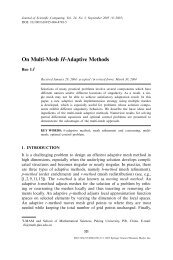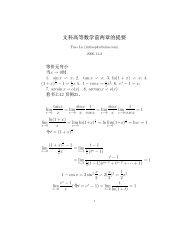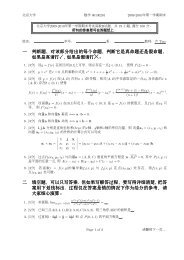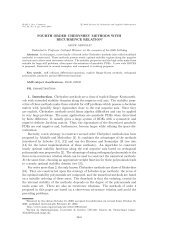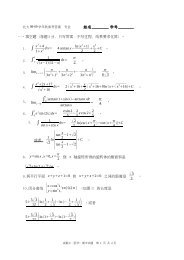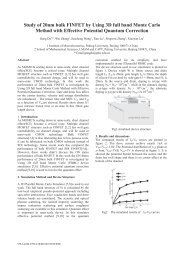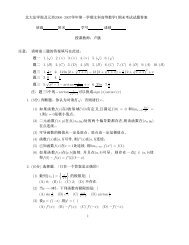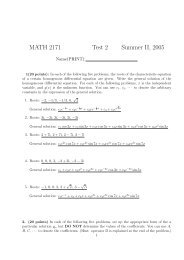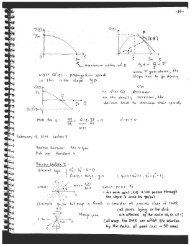Abstract
Abstract
Abstract
You also want an ePaper? Increase the reach of your titles
YUMPU automatically turns print PDFs into web optimized ePapers that Google loves.
CHAPTER 3. BIFURCATION ANALYSIS 67<br />
Imaginary Part<br />
0.02<br />
0.015<br />
0.01<br />
0.005<br />
0<br />
−0.005<br />
−0.01<br />
−0.015<br />
0.240<br />
0.242<br />
0.244<br />
0.246<br />
0.248<br />
0.250<br />
0.252<br />
0.254<br />
0.256<br />
Bifurcating Eigenvalues on nx=86,nk=72 Grid<br />
−5 −4 −3 −2 −1 0 1 2<br />
x 10 −3<br />
−0.02<br />
Real Part<br />
Figure 3.9: Eigenvalues Creating Oscillatory Solutions<br />
current-voltage plots. Figure 3.10 compares the previous grid results for Nx = 86,<br />
Nk = 72 (about 6,000 unknowns) to the results for the grids Nx = 512, Nk = 2048<br />
(about 1 million unknowns) and Nx = 1024, Nk = 2048 (about 2 million unknowns).<br />
The current-voltage plots of the 1 million unknown and 2 million unknown grids lie<br />
on top of one another. These grids present new physics in the current voltage-plot as<br />
previously shown from the coarser grid. The plot in general is shifted down, having<br />
a smaller global maximum than the coarser grid plot. There are more local minima<br />
and maxima in the refined grid plots as well.




